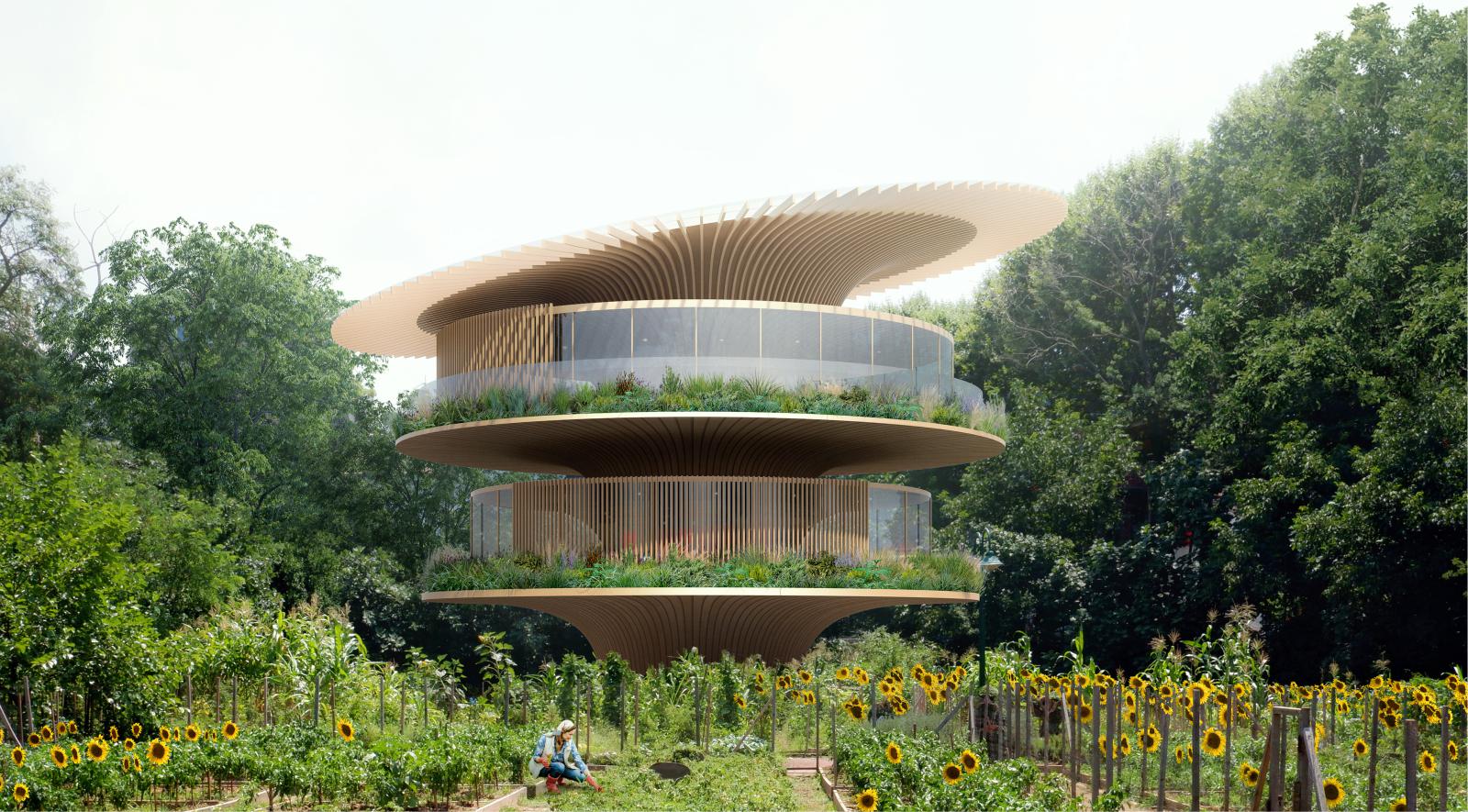Explore biophilic architecture with this guide, key elements of design that incorporate nature to create harmonious and sustainable living environments.
Biophilic architecture is an innovative design approach that incorporates natural elements into the built environment. It aims to create spaces that promote well-being, foster a connection to nature, and support sustainability. As urbanization increases, integrating nature into architectural design has become more crucial. Biophilic architecture offers a solution to this challenge. This guide will explore the key elements of biophilic architecture and how they can transform modern living and working spaces.
What Is Biophilic Architecture?
Biophilic architecture stems from the concept of biophilia, which reflects humans’ innate connection to nature. This design style prioritizes enhancing the relationship between people and the natural world. By incorporating natural materials, light, water, plants, and organic forms, biophilic architecture fosters a sense of harmony and well-being. The focus lies on creating sustainable, healthy, and beautiful spaces that reduce stress while promoting mental and physical health.
Key Elements of Biophilic Architecture

1. Natural Light and Views
Natural light and views of the outdoors are fundamental elements of biophilic architecture. Large windows, skylights, and open spaces allow sunlight to brighten interiors, creating a welcoming environment. Providing views of nature, such as gardens, trees, or water features, also connects occupants to the outside world.
- Design Tip: Maximize windows in the building’s design, orienting spaces to capture the best views and daylight. Use reflective surfaces and light colors to distribute natural light throughout the space.
2. Incorporating Greenery
Plants and green spaces play a central role in biophilic design. Adding living plants—through indoor gardens, vertical green walls, or rooftop gardens—brings nature into the built environment. Greenery enhances air quality, reduces noise, and creates a calming atmosphere, while also improving the space’s visual appeal.
- Design Tip: Use indoor plants strategically to boost air quality and aesthetics. Vertical gardens add greenery without taking up floor space.
3. Natural Materials and Textures
Incorporating natural materials like wood, stone, and bamboo in construction and interior design provides a tactile connection to nature. These materials evoke warmth and grounding. Textured surfaces, like rough-hewn wood or natural stone, enhance the sensory experience.
- Design Tip: Use natural materials in flooring, walls, and furniture to create a cohesive design that emphasizes sustainability and comfort.

4. Water Features
Water enhances biophilic architecture by adding a calming and restorative element. Whether through fountains, ponds, or indoor water walls, the sound and sight of water engage the senses and promote relaxation.
- Design Tip: Consider adding a small water feature in communal areas or outdoor spaces to create a peaceful atmosphere.
5. Organic Forms and Shapes
Instead of rigid lines and traditional structures, biophilic design embraces organic, flowing forms. Curved lines, asymmetrical shapes, and patterns inspired by nature mimic the natural world, creating a harmonious and inviting environment.
- Design Tip: Incorporate organic shapes in the building’s architecture and interior features, such as curved walls, furniture, and decorative elements inspired by nature.
6. Use of Natural Colors
Colors found in nature—greens, browns, blues, and soft earth tones—are essential in biophilic design. These hues create a soothing and balanced environment, making occupants feel more connected to the natural world.
- Design Tip: Choose a nature-inspired color palette to reinforce the biophilic theme. Opt for shades that complement greenery and natural materials in the space.
7. Connection to Outdoor Spaces
Creating seamless connections between indoor and outdoor spaces is a key aspect of biophilic architecture. Designing areas that blend interiors with gardens, terraces, or courtyards allows people to move easily between the built environment and nature.
- Design Tip: Incorporate outdoor living spaces like patios, balconies, or rooftop gardens that are easily accessible from inside the building.
Benefits of Biophilic Architecture

1. Enhanced Well-Being
Numerous studies have shown that biophilic design reduces stress, improves mood, and enhances cognitive function. Natural elements like light, plants, and water promote relaxation and well-being, making spaces more enjoyable and productive.
2. Increased Productivity
Nature-inspired environments boost creativity and productivity in workplaces. Employees in settings with biophilic design often feel more energized and focused, leading to better work performance and greater job satisfaction.
3. Environmental Sustainability
Biophilic architecture supports sustainable practices by promoting eco-friendly materials, improving energy efficiency, and integrating renewable resources. Green roofs, natural ventilation, and water-saving features contribute to a more sustainable environment.
Conclusion
Biophilic architecture offers a powerful way to bring nature into the built environment, providing both aesthetic and health benefits. By incorporating key elements such as natural light, greenery, water, and organic forms, this architectural approach creates spaces that promote well-being and sustainability. Whether designing a home, office, or public building, embracing biophilic architecture can enhance the connection between humans and the natural world, leading to more harmonious and healthier environments.
